 Go back to minami-world homepage
Go back to minami-world homepage
Attending English learning Program in Australia
Teacher: Ken-ichi Minami
When you travel on this continent, you gain an impression of how big it really is. The scenery along the 270km stretch from Perth to Boyup Brook is covered with pastures and forest. The scenery is similar to that of Hokkaido, Japan. The highway roads are wide, and the speed limit is 110 km/h. There are no traffic jams. Sometimes you see a farmhouse or a windmill that scoops up water from a well off in the pastures.
The cities are developed on the coast of continent. Inland is the dry area that is called "The Out Back." Sandy has traveled much in Australia , and he said that the roads are often straight for few hundred kilometres. Once, he traveled 3 days across the interior and saw neither another car, nor another human. It is not difficult to imagine how vast this continent is.
I home-stayed with the Artist-Sculptor Sandy Chambers and his wife Jacqui Chambers. We can more personally experience the life of a country and its peoples through a home-stay than through sightseeing. Of course, within such a great continent as this, there are many different kinds of life-styles. I was happy to be a part of one family, to come to understand their life-style, and to share foreign ideas about their culture and my culture. We were able to gain a deeper understanding of the cultural differences and thinking between our countries through my integration with Australia.
〔the Artist-Sculptor Sandy Chambers and his birds and camel〕
Australians really enjoy and value the style of their life. They often help each other through volunteer community activities as far as they can . In the town of Boyup Brook, there is a community project called "MEALS ON WHEELS," through which people volunteer to make meals in a kitchen hospital for the aged and deliver the meals to the homes. Other volunteer duties include cleaning up road sides, a town planing committee, organizing town activities, and assisting with culture events, such as exchanges and "The 16th Art Affair." Also, there is a public information bulletin, titled "Emergency Drivers," where the names and phone numbers of town members are listed as volunteer helpers for emergency situations.
〔the Artist-Sculptor Sandy Chambers and his wife Jacqui Chambers〕
Sandy and Jacqui are greatly concerned for the town of Boyup Brook and contribute to these volunteer activities. In Japan, at the time of the Hanshin earthquake disaster or oil spill accidents, such volunteer groups have also been positively initiated. The spirit of such volunteer groups is taking root in Japan. I hope that there are such kindhearted volunteer groups in Japan too.
The road sides, the public town property, and the school grounds are all beautiful. There is no rubbish lying on the ground. Often in Japan, there are bottles, cans and rubbish scattered at the road side. In Boyup Brook, there is a "No-Litter" policy, and community members voluntarily pick up any stray rubbish.
Many place names that have "up" or "brook" in their title are found near Boyup Brook. "Up" means "a place of," and Boyup Brook owes its name to an Aboriginal word meaning "place of big stones" or "place of big smoke" given to Booyup Pool .
Students attend school in Boyup Brook up to 15 years old. If students want to advance to Senior High School and University, they must go to a city school far away from Boyup Brook. Problems of lack of work and depopulation exist the same as in Japan's smaller towns. Inhabitants are always thinking about town planning and organizing town activities.
Examples of an expression of time would be 10 o'clock,quarter past 10,half past 10,and three quarters past 10. Time is usually expressed in terms of each 15 minutes.
Expressions of money are divided by the 3rd figure. For example: a thousand A$ (Australian dollars), or a million A$. In Japan, money is usually expressed using units of 10,000 "man," and therefore I could not easily understand "~some~ thousand A$". The more I had to change from A$ to yen, the more I came to understand the expressions of Australian money, especially when I wrote the numbers on paper. I use a figure to represent each 3rd block of numbers in physics. For example, k(kilo=1,000) or M(mega=1,000,000), but I still found it difficult to think of money the same way at times.
English in Australia is spoken with an Australian accent, and of course, an accent inspires a unique pronunciation. At first, it was hard for me to hear the English through the accent, but I gradually got used to the Australian English. I had to listen carefully. After all, there has been a big gap (of 20 years!) during which I have used little English. I have completely forgotten many English words I once knew.
As for the other members of my group - the students of Ohyodo Senior High School - they were very friendly and spoke naturally with the Australian students. I was surprised to see such patience and understanding in our students. I think that they have developed a more positive attitude through this culture exchange. It is important for them to express themselves and to develop their special abilities. Through this Australian exchange, the Japanese students were able to gain a better understanding of themselves.
Australia is located in the southern hemisphere. Australia is a very large country, stretching a long way from north to south, and therefore Australia experiences many different climates. As Boyup Brook is on the opposite side of equator to Japan, the seasons are opposite. At its coldest, Boyup Brook has a frozen frosty day, but there is never ice or snow.
Between November and March, there is no rain at all. The temperature is nearly 40 degrees during the summer, but humidity is only 3%. It is more comfortable than Japan. Each home has a big tank of water that collects and stores rain water for domestic use. Especially during the summer they must manage their water supply carefully. When they use water from the tap, they must be more careful to conserve than in Japan.
It is easy for fires to spark in summer. The government makes plans to burn miscellaneous small trees and the dead surfaces of the grass in the bush. The grass of farms is green in winter and brown in summer.
As the season of the months is opposite to that in Japan, I often became confused about the seasons and the holidays. In the Australian winter, the sun incline can be seen in the northern hemisphere, which is the opposite to Japan. From the position of the sun's incline, I could carefully judge my direction.
The southwestern area of Australia is where fruits are grown. Grapes are popular, and they have many wine vinyards. Rice is not a staple food, but the meals always had a good combination of vegetables and fruits, and meat or fish. The food was very delicious.
I asked the teachers and students of BBDHS about the method of sending e-mail they used, and I learned how to send e-mail to Japan. The teachers and students of BBDHS often used the Internet for research, but when the computer was free, I used my free time to send messages. Also I sent digital camera photographs on e-mail. In Japan, a teacher printed out these messages and photographs and posted them to each exchange student's home. When I returned to Japan and looked at the photographs, I was surprised at how clearly they had transmitted. Through the photos, the parents were able to have a better understanding of the school and home-stay situation of the students in Australia. It gave me a great appreciation of world wide communication.
In a newspaper article I read that the user population of the Internet in the USA and Canada is now 80 million, which is 4.4 times greater than it was in 1995 . In Australia, the Internet is used to educate students who live far away from public schools.
Now many people in the world can speak English. The abilities to listen, read and speak English are essential for cultural, economic and technical exchange. We visited Singapore on the way back to Japan. Singapore is multiracial nation. There are Chinese, Malaysian, Indian and Western inhabitants. It is a multilingual and multicultural country, with many unique and important regions, languages, habits and cultures. They rely on each other and through their understanding have developed the modern nation of Singapore.
Language is important for the creation of public opinion and culture, and a common language is needed for a better understanding and appreciation of each other's culture.
I heard beautiful Japanese spoken on the airplane from Singapore to Japan. I think that a beautiful Japan and beautiful Japanese are important, but I realize that even I don't know all about Japan.
This English study and cultural exchange provided me and the students and teachers of Oyodo Senior High School with a great opportunity. Thank you very much for welcoming and helping us. Thank you too, to the staff of the AIIU, and to our terrific coordinator, Jenny; to Boyup Brook District High School, and to the community members of Boyup Brook town . Also I want to say thank you to Ohyodo High School who gave us the chance and supported us all the way through the program.
オーストラリア英語研修旅行に参加して
南 賢 一 (理科教諭)
この大陸を移動すると,この大陸がいかに大きいか実感する。PerthからBoyup Brookまでの270kmは放牧地と森の景色,日本でいえば北海道の景色が延々と続くのである。街を少し出れば制限速度110km/hの余裕ある道路。渋滞はない。ポツリポツリと農家がある。放牧地の中に井戸から水を汲み上げる風車が立っている。都市は大陸の沿岸部分に発達している。さらにOut Backと呼ばれる大陸内部は想像を絶する乾燥の地。オーストラリアの広い地域を旅行しているHome Stay先のSandyさんの話しに,数100kmの真っ直ぐな道,また,3日間走り通して車一台・人一人と出会わなかったというのを聞くと,この大陸のとてつもない大きさを思い知るのである。
私は画家−彫刻家のSandy Chambersさんと彼の妻の Jacqui Chambersさん宅にHome Stayさせていただいた。もちろん広い国だから,当然気候風土の違いにあった生活がそこにある。Home Stayをすることによって,観光旅行より直に季節感や生活ぶりの一端に触れることができた。何よりその国の人と会話し,互いに文化を語るのは楽しかった。
オーストラリアの人たちは,みんな自分たちの生活を楽しみ,たいせつにして生きているように見えた。また,年代や立場に応じて積極的にボランティア活動に参加し助け合って生活している。Boyup Brookの町では,住民が病院の厨房でお年寄りのために手作りの食事をつくり宅配する"MEALS ON WHEELS",道路わきの清掃,町づくり,町おこし,文化交流や第16回を数える"Art Affair"などの文化イベントなどがボランテイアで運営されている。町の広報では,"Emergency Drivers"といって,緊急の場合に助けを求めることができる住民が交代で決められていた。Sandy さんや Jacqui さんも上記のボランティアに積極的に関わっておられた。日本では,阪神大震災や原油流出事故などでボランティアの方たちが活躍され,その精神が根付きつつある。
道路わきや町,学校の中も綺麗であった。日本ではたいてい道路わきや吹きだまりにビン,カン,ごみが見られるが,一切なかった。ごみをしないことと,ごみを拾うボランティアが徹底している。
Boyup Brookの近くには〜upや〜 Brookという地名が多く見られた。〜upはa place of
という意味で「大きな石のある所」または「広く煙たなびく所」を意味するアボリジニの言葉である Booyup Poolに由来する。
Boyup Brookの学校は15歳までで,Senior High SchoolやUniversityに進む子供は遠い大都市部に出ていく。日本と同じような仕事と過疎の問題があり,町づくり,町おこしに智恵をしぼっているように見えた。
時間の表現は,例えば10 o'clock,Quarter past 10 ,half past 10 ,3 quarters past 10 などのように多くの場合15分きざみであった。お金について,1,000以上は3桁区切りの表現をする。何千A$(オーストラリアドル),何millionA$,という表現になり,万単位に慣れている私にとって何千A$という表現はわかりにくかった。さらに,円とA$の換算も加わるので,数字を紙に書いてみないと金銭感覚がピンとこなかった。物理の授業ではk(キロ=1,000),M(メガ=1,000,000)という3桁区切りの10の指数倍を使っているのに,どうもお金の感覚の方は理解に時間がかかった。
英語は,オーストラリアなまりのうえに,個人的な癖もあり,なかには口をあまりあけず話す人もいる。英語に自信がない上,慣れない私にとっては何回か聞き直し,よ〜〜く聞いているうちにちょっとはわかるようになったが,かなり苦労した。やはり20年以上英語を使わなかったGapは大きく,かつては覚えたはずの単語や熟語を忘れてしまっていた。特徴はToday トゥディがトゥダィに,Sunday サンディがサンダィに,Monday マンディがマンダィに,Mail メイルがマイルになる。文字綴りをよく教えてもらったが,a(エイ)が(アイ)になり,iと混乱してしまった。
一方,生徒たちはごく自然にオーストラリアの生徒たちと交流していた。その柔軟さに驚いた。国際交流には,さらには,素直さと積極性も併せもつ必要を感じた。自分を表現することもたいせつだ。なにか自分の特技をもつこともよいのではないか。国際交流によって自分や自分の国が見えてくるのではないだろうか。
オーストラリアは南半球に位置し,南北にも長いので気候の種類も多い。Boyup Brookは赤道に対してちょうど日本と反対側にあたり,季節は逆になる。霜が降りることはあるが,氷がはったり雪が降ることはないそうだ。夏を挟んで,11月から3月まで雨が降らない。夏は気温は40℃近くになるが,湿度は3%ぐらいだそうだ。日本の夏よりは過ごしやすいらしい。それぞれの家に大きなタンクが備え付けてあり,雨水を蓄えて,すべての水を賄っている。特に夏は水を大切にする。日本のように水道水を流しっぱなしで使ったりしないそうだ。また,火災が起こりやすくなるので,Bush では計画的に下草を燃やしたり,火の見櫓から警戒したりする。牧草地は冬は緑で,夏になると茶色になるそうだ。月に対する季節の関係が逆になるので,よく勘違いをした。また,太陽の傾きが北半球と反対になるので,太陽の傾きから判断する方向感覚も注意がいった。
オーストラリア南西部は,果物の産地でもあり,ぶどう栽培およびワインの生産も盛んな地域である。食事は「ごはん」が主食でないだけで,肉か魚,野菜や果物とバランスもよく,たいへんおいしくいただいた。また,Jacquiさんの手作りのデザートもたいへんおいしかった。
e-mailの送り方をBoyup Brookの先生や生徒に聞きまくりながら,日本に送った。Internetは生徒や先生も調べ物で,よく使っているので,すきまをぬってMailをつくり送った。瞬時に日本に届いているらしい。幸運にも私のHome Stay させていただいたお宅は学校から歩いても10分以内で帰ることができる近さだったので,学校で居残りさせてもらった。画像もはじめ苦労したが,Digital Camera で撮って送った。日本ではe-mailを印刷して生徒の各家庭に郵送してもらった。日本に帰ってから見せてもらったが,カラーで本当に綺麗に印刷されていて感動した。まさに『百聞は一見にしかず』で,ようすがよくわかっていただいであろう。情報通信の進歩を実感した。アメリカ・カナダのインターネット人口は,1995年の4.4倍の約8,000万人になったということである。オーストラリアでは,遠距離の生徒の教育にインターネットが利用されている。
やはり,英語ができる(聞き取り,話せる)ことは,英語が多くの国で通じることを考えると,国際交流や経済,技術交流などあらゆる面で役にたち便利である。帰りに立ち寄ったシンガポールは中国人,白人,インド人などよりなる多民族国家で,言語もたくさん話されている。まさに Multi-cultureである。それぞれ,自分の宗教,民族,言語,習慣を大切にしながら,互いに依存しあい,一つの目的をもった一つのシンガポールという国家を形成しているのである。
帰りの日程において日本に近づくにつれ,日本語が聞こえるようになった。「日本語がわかる!」と感動した。かつて日本では『読み・書き・算盤』が教育の基本とされた。日本の識字率99%以上は世界でも高率で,国民の世論形成や教育・文化を深めるうえにおいては,ことばは欠かせない。さらに心の安定にもことばは欠かせない。
シンガポールから関空に飛んだシンガポール航空では,10人の乗務員中2人が日本人だった。あるとき,どきっとするような美しい日本語を耳にした。美しい日本語,美しい日本をたいせつにしたいと思った。日本のこともまだまだ知らないことを思い出した。
今回の英語研修,文化交流において,AIIU,co-ordinatorのJennyさん,Study CentreのBoyup Brook District High School,Boyup Brookの町のみなさんには歓迎をしていただき,またたいへんお世話になりました。心より感謝申しあげます。ありがとうございました。また,この機会を与えていただき,私たちを力強くサポートしていただいた大淀高校に感謝します。
 Go back to minami-world homepage
Go back to minami-world homepage
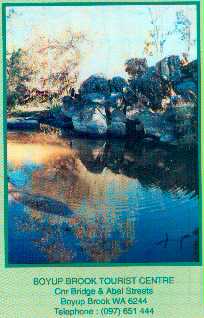

 Go back to minami-world homepage
Go back to minami-world homepage 
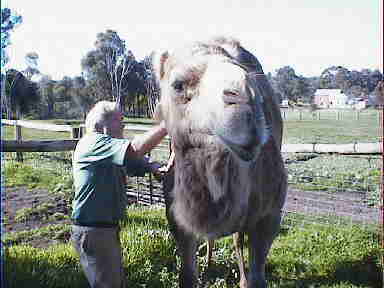
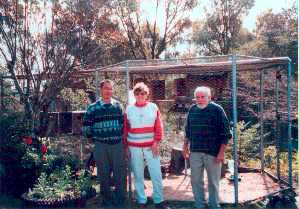

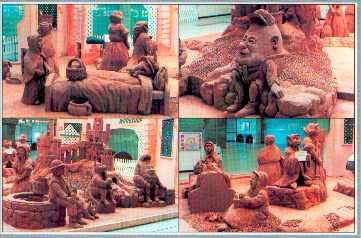
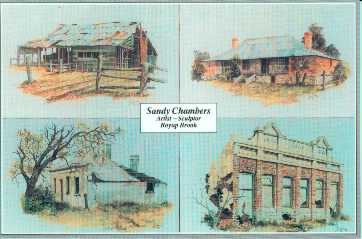
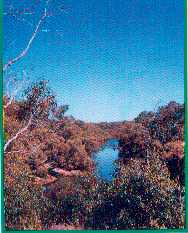
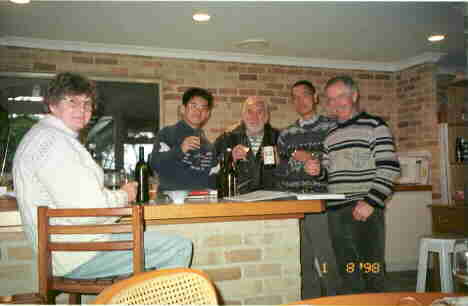
 Go back to minami-world homepage
Go back to minami-world homepage